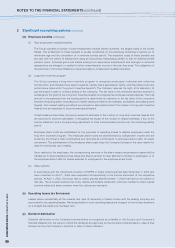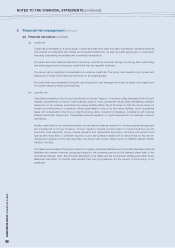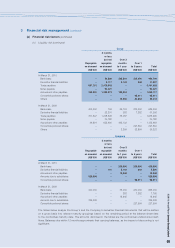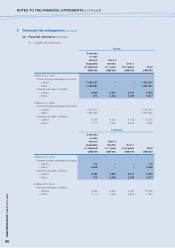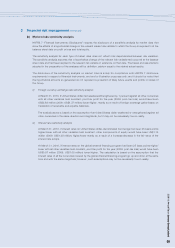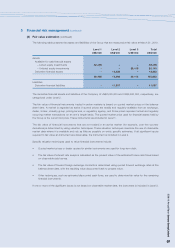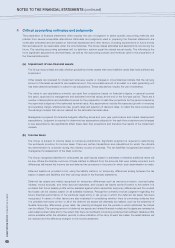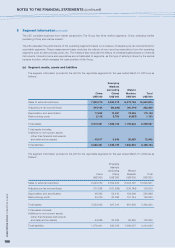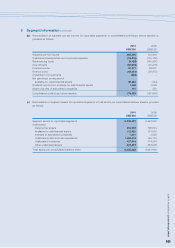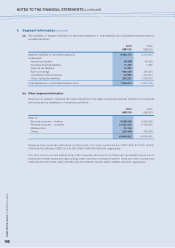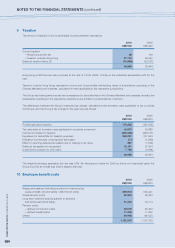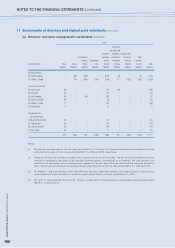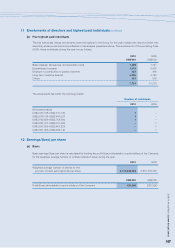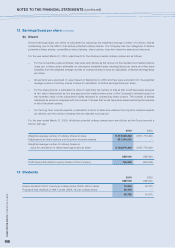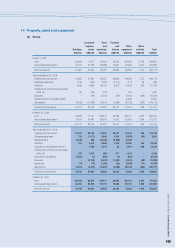Lenovo 2010 Annual Report Download - page 101
Download and view the complete annual report
Please find page 101 of the 2010 Lenovo annual report below. You can navigate through the pages in the report by either clicking on the pages listed below, or by using the keyword search tool below to find specific information within the annual report.
2009/10 Annual Report Lenovo Group Limited
9999
4 Critical accounting estimates and judgments (continued)
(b) Income taxes (continued)
Where the final tax outcome of these matters is different from the amounts that were initially recorded, such
differences will impact the income tax and deferred tax provisions and deferred tax assets in the period in which such
determination is made.
(c) Warranty provision
Warranty provision is based on the estimated cost of product warranties when revenue is recognized. Factors
that affect the Group’s warranty liability include the number of sold units currently under warranty, historical and
anticipated rates of warranty claims on those units, and cost per claim to satisfy our warranty obligation. The
estimation basis is reviewed on an on-going basis and revised where appropriate. Certain of these costs are
reimbursable from the suppliers in accordance with the terms of relevant arrangement with the suppliers. These
amounts are recognized as a separate asset, to the extent of the amount of the provision made, when it is virtually
certain that reimbursement will be received if the Group settles the obligation.
(d) Future billing adjustments
Estimates that further impact revenue recognition relate primarily to allowance for future volume discounts and price
rebates, and customer sales returns. Both estimates are relatively predictable based on historical experience. The
primary factors affecting the Group’s accrual for estimated customer returns include estimated return rates as well
as the number of units shipped that still have a right of return as of the balance sheet date.
(e) Retirement benefits
Pension and other post-retirement benefit costs and obligations are dependent on various assumptions. The Group’s
major assumptions primarily relate to discount rate, expected return on assets, and salary growth. In determining
the discount rate, the Group references market yields at the balance sheet date on high quality corporate bonds.
The currency and term of the bonds are consistent with the currency and estimated term of the benefit obligations
being valued. The expected return on plan assets is based on market expectations for returns over the life of the
related assets and obligations. The salary growth assumptions reflect the Group’s long-term actual experience and
future and near-term outlook. Actual results that differ from the assumptions are generally recognized in the year they
occur.
(f) Fair value of derivatives and other financial instruments
The fair value of financial instruments that are not traded in an active market (for example, over-the-counter
derivatives) is determined by using valuation techniques. The Group uses its judgment to select a variety of methods
and make assumptions that are mainly based on market conditions existing at each balance sheet date. The Group
has used discounted cash flow analysis for various available-for-sale financial assets that are not traded in active
markets.
5 Segment information
The Group announced a new organizational structure that became effective in April 2009 with the creation of two new
business units – one focusing on customers in emerging markets, and the other focusing on customers in mature markets.
The new structure, namely China, Emerging Markets (excluding China) and Mature Markets, replaces the Group’s original
regional market organizations by geography and is designed to align the Group more closely with its strategic direction
and market dynamics to better serve customers. In conjunction with the adoption of HKFRS 8 ‘Operating segments”, the
Group has adopted the new organizational structure as the reporting format effective for the year ended March 31, 2010.
The comparative segment information has been restated to reflect the current organizational structure.
Management has determined the operating segments based on the reports reviewed by the Lenovo Executive Committee
(the “LEC”) that are used to make strategic decisions.



